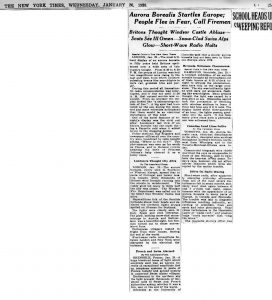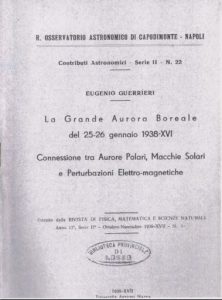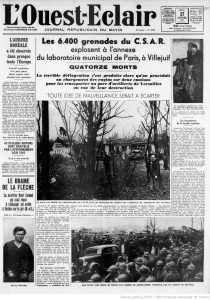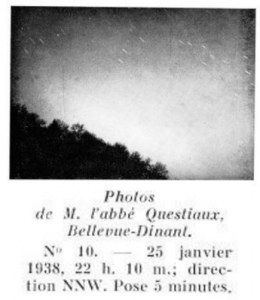The aurora borealis predicted by Our Lady was seen in Canada
Apparitions:
In 1917 World War I was in its fourth year. In May of that year, anguished that his mediation to end the War failed, Pope Benedict XV asked for Mary’s intercession for the war to end. A week later, on May 13 Mary appeared to three children in the village of Fatima, Portugal. Mary told the children she would appear on the 13th day of the next six months. During her visitations she gave messages to the children, including what came to be known as the Three Secrets. Her final visitation resulted in the Miracle of the Sun, witnessed by 70,000 people.
The second secret:
The second secret was a statement that World War I would end, along with a prediction of another war during the reign of Pope Pius XI, should men continue offending God and should Russia not convert. The second half requests that Russia be consecrated to the Immaculate Heart of Mary: “You have seen hell where the souls of poor sinners go. To save them, God wishes to establish in the world devotion to my Immaculate Heart. If what I say to you is done, many souls will be saved and there will be peace. The war is going to end: but if people do not cease offending God, a worse one will break out during the Pontificate of Pope Pius XI. When you see a night illumined by an unknown light, know that this is the great sign given you by God that he is about to punish the world for its crimes, by means of war, famine, and persecutions of the Church and of the Holy Father. To prevent this, I shall come to ask for the Consecration of Russia to my Immaculate Heart, and the Communion of reparation on the First Saturdays. If my requests are heeded, Russia will be converted, and there will be peace; if not, she will spread her errors throughout the world, causing wars and persecutions of the Church. The good will be martyred; the Holy Father will have much to suffer; various nations will be annihilated. In the end, my Immaculate Heart will triumph. The Holy Father will consecrate Russia to me, and she shall be converted, and a period of peace will be granted to the world” (Santos, Fatima in Lucia’s Own Words I (2003), pgs. 123–124).
Red aurora borealis:
On 25 January 1938, The New York Times reported “Aurora Borealis Startles Europe; People Flee in Fear, Call Firemen” (The New York Times. 25 January 1938. p. 25). The celestial display was seen from Canada to Bermuda to Austria to Scotland, and short-wave radio transmissions were shut down for almost 12 hours in Canada. It is noteworthy that during the final hour of this aurora, Christian Rakovsky was undergoing interrogation in the Soviet Union, giving information to Stalin about Western involvement in Hitler’s rise, suggesting an alliance with the Western powers against Germany.
The newspapers:
Aurora Borealis Startles Europe,
People Flee in Fear, Call Firemen
Britons Thought Windsor Castle Ablaze.
Scots See Ill Omen
Snow-Clad Swiss Alps Glow …
“From 6:30 to 8:30 P. M. the people of London watched two magnificent arcs rising in the east and west, from which radiated pulsating beams like searchlights in dark red, greenish blue and purple. …
From an airplane the display looked like “a shimmering curtain of fire.” …
Police stations, fine brigades and newspaper offices all over the country were inundated by calls tonight asking, “Where is the fire?” The phenomenon was seen as far south as Vienna, …
“[The phenomenon] spread fear in parts of Portugal and Lower Austria tonight, while thousands of Britons were brought running into the streets in wonderment. The ruddy glow led many to think half the city was ablaze. The Windsor Fire Department was called out in the belief that Windsor Castle was afire. …
an ill-omen for Scotland.
“The lights were clearly seen in Italy, Spain and even Gibraltar. …
firemen turned out to chase non-existent fires. Portuguese villagers rushed in fright from their homes, fearing the end of the world. …
“France, Jan. 25.—
A huge blood-red beam of light … spread anxiety in numerous Swiss Alpine villages. Emblazoned in the northern sky the light brought thousands of telephone calls to Swiss and French authorities asking whether it was a fire, war or the end of the world. …
“HAMILTON, Bermuda, Jan. 25.— …
The sky was brilliantly lighted with dark red streamers, flashing like searchlights.”
End Quotation.
Témoin oculaire canadien:
Paul Fournier was four years old when he witnessed the aurora borealis. He was living 519 King Edward street, in Ottawa, Canada. January 25th and 26th, 1938: Mom had prepared dinner and I, at four years old, was taking care of my vocation, which was teasing my brothers. My father came from work where he was in charge of three laboratories; so I can estimate that it was around seven o’clock [in the evening]. Just before we are going to sit at the table, dad exclaims: “Is there a fire?” pointing at the window; in fact we could see that the snow reflected an intense red light. Dad was used to science, and in fact wanted to measure the intensity of the light and went out on the balcony followed by the whole family. With the newspaper in hand, he said he could read it easily.
The sky, where we looked to the left or to the right, was of a brilliant gleam, like a burning mist, disconcerting for others but only interesting for me. I felt that my parents were confused because it was a phenomenon they had never seen in their life. The sky had no clouds or rays, but seemed to vary slowly in intensity.
It was cold and we were in shirts so we came back after a few minutes. The temperature was zero F on the 25 and minus fifteen F on January 26, 1938. This what I remember that night.
[It should be noted that the aurora red are extremely rare and occur at an altitude of 300 to 400 miles, and as far as I know, are never visible until the north of Africa or the south of Australia, which was the case of this one. The maximum of the seventeenth solar cycle was April 1937, so astronomers are left speechless to understand what was causing the phenomenon.]
Sources :
The New York Times, Wednesday January 26, 1938, L + (Late City Edition) Page 25






